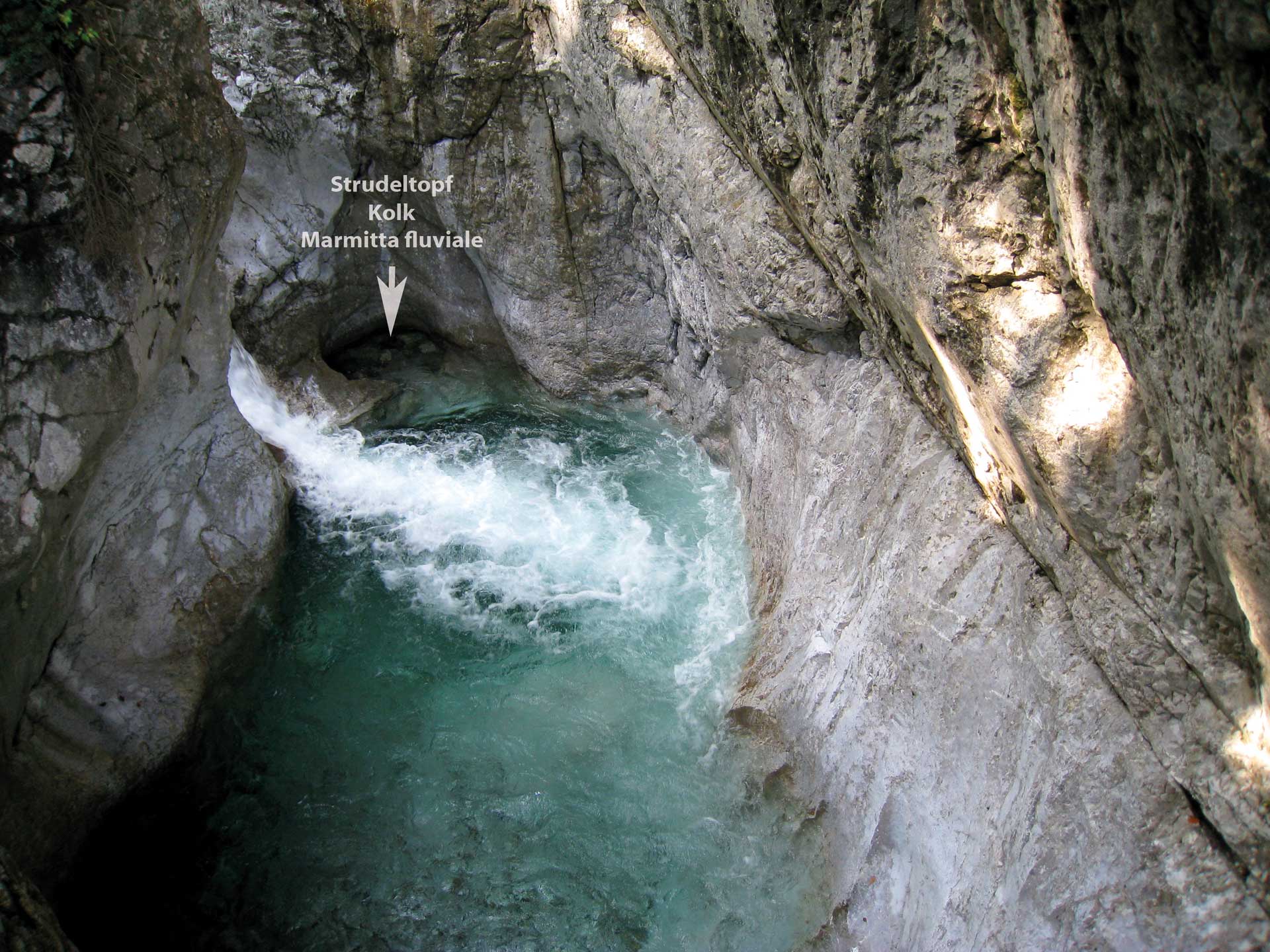At this stopping point, you can see the narrowest section of the Garnitzenklamm gorge. Here, the brook has carved its way deep down into the green-red-grey banded limestones and sculpted out some impressive kolks.
Kolks are cylindrical to trough-shaped indentations which develop when flowing water on a stream bed encounters an obstacle and is forced to rotate in one and the same place. The water in a kolk rotates with increased speed, carrying its load of debris with it. This debris increases the power of the water and its abrasive action on the rock. The increased speed also means that any eroded material is quickly transported away. Similar hollow formations are also caused by melt water forming beneath glaciers. In this case, they are known as glacial kolks.

